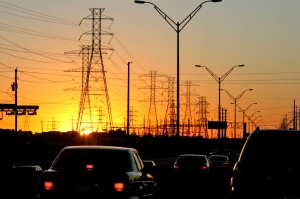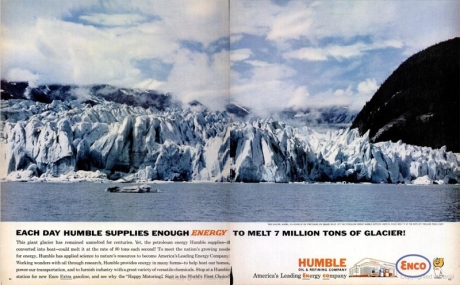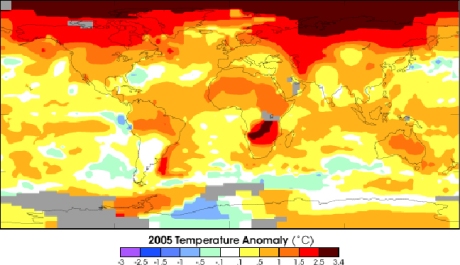
To understand the latest brouhaha about safe levels of ozone, it helps to understand the difference between science and policy.
First the back story. In 2008, the administrator of the U.S. Environmental Protection Agency, Stephen Johnson, reduced the allowable level of ozone in the air from 84 parts per billion to 75 ppb. Johnson said the change would lead to cleaner air and improve public health.
However, the EPA’s independent advisory panel had recommended that the limit be set even lower, in the range of 60 ppb to 70 ppb. Critics, including scientists, environmental advocates and medical associations, such as the American Thoracic Society, accused Johnson and the George W. Bush administration of prioritizing the economic concerns of polluters over the interests of the general public.
Depending on your point of view, you may see things Johnson’s way or you may side with his critics. But the process worked exactly as it was supposed to, with scientists analyzing the data and policymakers exercising their authority to take other factors into consideration, says Dr. Roger McClellan, a toxicologist and former chairman of the EPA’s Clean Air Scientific Advisory Committee. “They were an advisory panel, not a standard-setting panel,” he says.
Fast-forward to the Obama administration. Lisa Jackson is now the EPA administrator, and she wanted to revisit the ozone standard. She asked the current members of the advisory panel to take another look at the data, and they agreed with the previous panel’s conclusion that lowering the standard to between 60 ppb and 70 ppb range would have beneficial effects on public health. In a 2010 regulatory impact analysis report, the agency estimated that setting the limit at 70 ppb would prevent about 2,200 heart attacks, 23,000 asthma attacks and between 1,500 and 4,300 premature deaths each year; a limit of 60 ppb would avert 5,300 heart attacks, 58,000 asthma attacks and 4,000 to 12,000 premature deaths.
So this month, when President Obama put the kibosh on any reconsideration of the ozone standard, all those who railed before railed again.
The Clean Air Act mandates that the standards for certain pollutants, including ozone, be revisited every five years. So even as the advisory panel was digging into the old reports to answer Jackson’s queries, its members have also started reviewing more recent evidence for 2013, says the current committee chairman, Dr. Jonathan Samet, professor of preventive medicine at USC’s Keck School of Medicine.
Here’s a closer look at the scientific case against ozone.
What is ozone?
Ozone is the main component of smog and is created when certain volatile chemicals emitted from cars and factories react with sunlight. The ozone level in Southern California frequently is higher than the EPA standard, with the South Coast Air Basin out of compliance on 109 days last year, according to the South Coast Air Quality Management District.
How is ozone harmful to health?
Ozone is a gas that you inhale with the surrounding air. It can cause irritation and inflammation of the airways as well as coughing and shortness of breath. These effects depend on the concentration of ozone in the air you’re breathing, how rapidly and deeply you’re breathing and your own sensitivity to the pollutant.
Researchers have documented wide variability in people’s symptoms when they are exposed to controlled levels of ozone. These experiments usually have young, healthy nonsmokers breathing high concentrations of ozone — greater than 80 ppb and sometimes as high as 120 ppb — for six to eight hours. Subjects spend up to half of that time exercising, forcing them to inhale more of the pollutant.
The EPA panel said it was a “scientific certainty” that under these conditions, ozone decreases lung function (as measured by the amount of air a person breathes out when exhaling as hard as possible). The decline, of at least 10%, may sound small, but it is considered “clinically relevant,” according to the American Thoracic Society. Even when ozone levels were only 60 ppb, one study found that two out of 30 healthy subjects had at least a 10% decrease in lung function and six others showed symptoms of respiratory distress. That report was published in 2006 in the journal Inhalation Toxicology.
Who is most at risk?
The problem worsens for certain groups of people, notably children, seniors and those with asthma or other respiratory health issues.
* * *
What are the public health consequences of having too much ozone?
Researchers in real-world settings have correlated ozone-level spikes to increased mortality and greater numbers of emergency room visits for respiratory problems.
For example, Delfino and his colleagues studied more than 23,000 emergency room admissions at 25 Montreal hospitals in the summer of 1993. They found that on days after the ozone level was at or above the average of 36 ppb, the number of older patients with respiratory symptoms who came to the ER jumped by 21%. However, ER visits for patients younger than 64 with respiratory symptoms or for patients with other kinds of health problems did not vary with ozone level. The results were published in the American Journal of Respiratory and Critical Care Medicine.
“Hundreds of similar studies have been done throughout the world,” Delfino says.
More.







